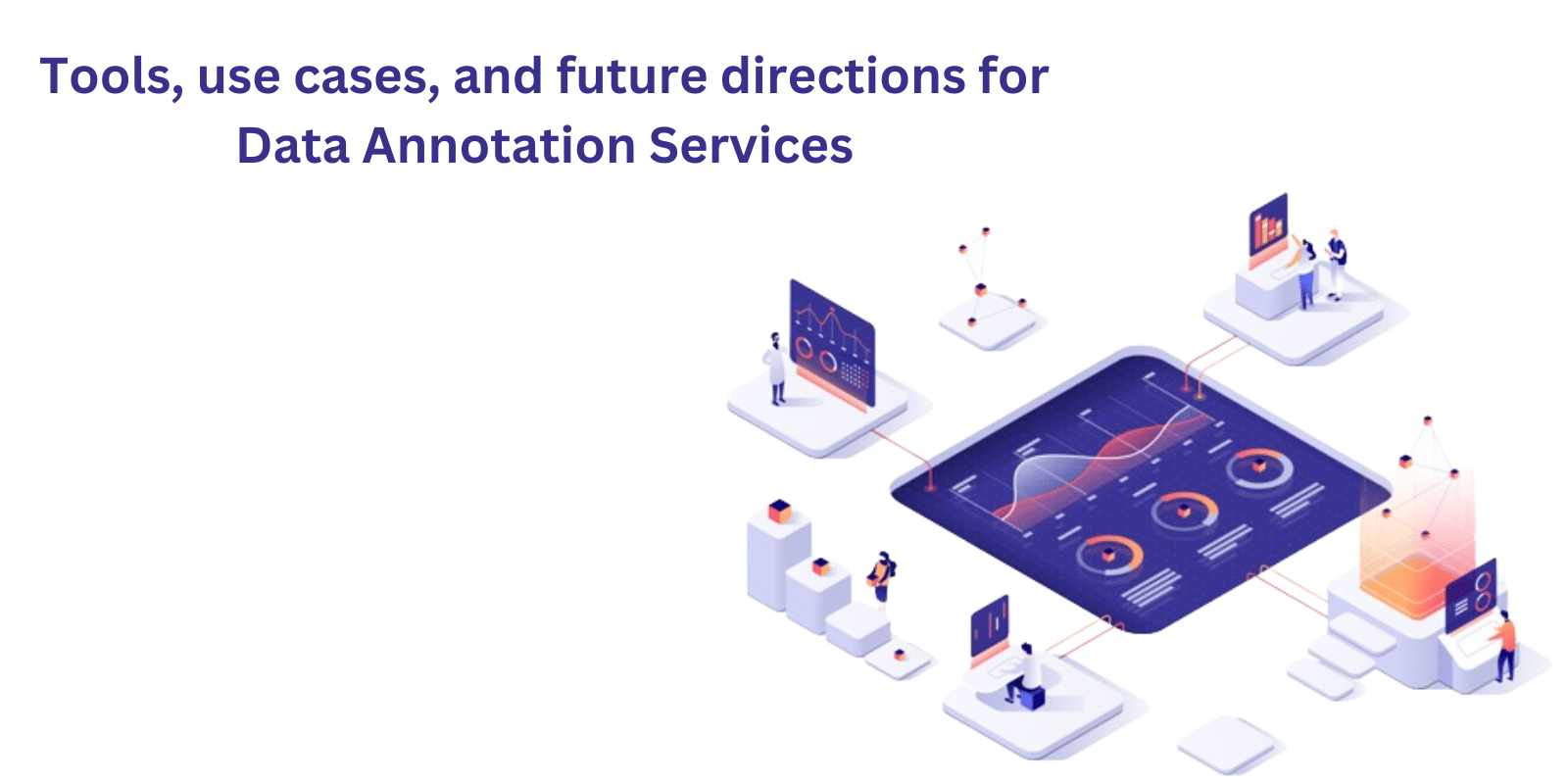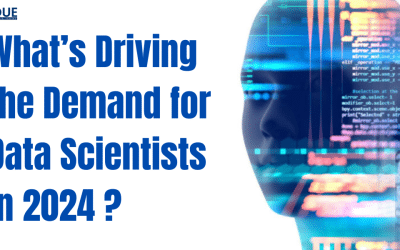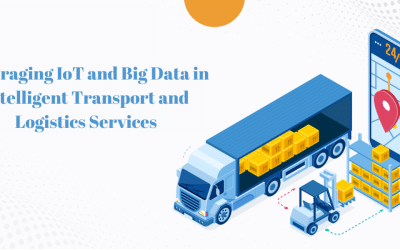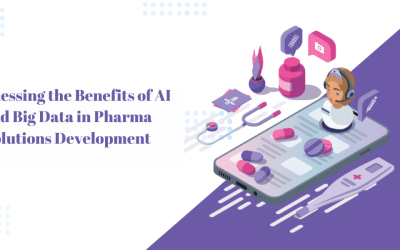If we are talking about the current trend of data annotation services in global technology in artificial intelligence or machine learning, the primary factor we are concerned about is the data. The life of a machine learning model begins with data and ends when the model is deployed. Top-quality training data forms the foundation of an effective model. From simple notations to complex technology for data enhancement, data annotations services have had an exciting trip through attempts to arrange and draw insight from the data.
Annotation is gaining unprecedented significance due to the massive growth in AI and machine learning. In 2025, nearly every business will implement AI into its activities, highlighting the necessity of investing more energy in developing capabilities for Annotating AI.
Data annotation services is the process that adds meaningful and valuable data annotations to the dataset, making it easier for algorithms that use machine learning to learn from and analyze the data. In the past, data annotation was less essential than it is today because data scientists used the structured data format, which only required a small number of annotations. In the past 5-10 years, data annotation has become increasingly important to machine learning systems so they can work efficiently.
With this, machine learning algorithms would get dispersed in a sea of unstructured data and could differentiate one data element from another. Be aware that unstructured information makes up the most significant amount globally, including messages on social media, emails, images, and audio files such as text, sensor data, etc. This makes data annotation extremely important. It is possible to make an ominous assertion and declare that data annotation services is an essential component in processing data that one should not be able to miss. In light of the rising importance of AI, machine learning, and the ever-growing amount of data being produced worldwide, it is crucial for businesses and companies to be in the game.
Whether you’re a novice to data annotation or an experienced professional, this piece can provide valuable insight into the field. This article will also keep you on top of all the latest trends.
What Exactly Is Data Annotation?
Two critical aspects aid in understanding the significance of data annotation. The first is its essential nature and purpose. Data annotation services is an approach to enriching raw data by attaching tags, labels, or labels to unstructured data. This offers the essential information to build AI and machine-learning models.
Data annotation may have various types depending on the nature of the data and the purpose of the AI or machine-learning project. Therefore, it’s an umbrella term that covers types such as picture annotations, videos, audio annotations, and text annotations.
Annotating data is crucial to improving its utility and quality. Annotated data is the foundation of algorithms developed and enhanced to discern complex patterns and predict precisely. Other ways in which annotation can benefit data include reducing mistakes and errors that might be in the raw data. Data annotation acts as a connection between raw data and information essential for solid decision-making.
What Is the Importance of Annotation on Data?
Before we discuss the significance of data annotation services, we must acknowledge the unique problems posed by the unpredictability of human language.
They express their desires in many different ways, short or long, jargon-stuffed or formal. In addition, a user’s goals have more precision than any classification you use to describe the user. There are endless possibilities for communicating a message or even asking a question, and humans can still effortlessly communicate because they’re naturally skilled at recognizing various linguistic nuances.
For example, look at a coworker who tells you a long account of their trip and their inability to connect to their company portal because of poor WiFi service. Despite various HR-related words like “vacation,” “time off,” and “time off,” a regular reader or listener could quickly determine that this was an IT problem and not an HR issue.
A bot that isn’t trained by the opposite may need help deciding which keywords are most relevant. This is precisely when data annotation services are required. Training AI models using high-quality, annotated data enables them to understand the variety and complexity of natural language. They can also discern the message from the noise and concentrate on the critical factors of user input.
This is particularly relevant when anticipating user wants based on a specific taxonomy. By ensuring a reasonable amount of granularity during an annotation procedure, we can increase the quality of our AI decision-making capabilities. This approach is different from the ones used by a few, in which they attribute a singular intent to every piece of information, such as a knowledge base article. Due to an increase in intents, this can reduce productivity and the ability to comprehend users’ needs.
Furthermore, AI systems and chatbots will respond quickly to various human interactions with little effort. Data annotation services enables AI to understand complex user-generated symptoms and link to solutions that cut through language complexity to provide sophisticated solutions.
For a brief overview, data annotation is a crucial element in creating AI systems that can provide relevant user experiences. Its impact is broad, encompassing a wide range of industries and applications, greatly enhancing the capabilities and usefulness of AI-powered systems worldwide.
Tools For Annotation of Data
An array of tools is readily available for annotation, and the annotators should select those most appropriate to an assignment. A few of the most widely-used tools that annotators typically use include:
Labelbox
Labelbox is a well-known cloud-based platform offering various data annotation tools, such as bounding boxes, keys, points, polygons, and more. It allows collaboration, versioning, and integration with well-known Machine Learning frameworks. It is an effective instrument for labeling different kinds of data to make it readable for computers. Users can use it to make annotations on diverse types of data, such as texts, images, videos, documents, audio medical images, and Geospatial data.
The platform comes with a complete collection of data annotation tools, such as creating bounding boxes surrounding objects within images, segmenting the parts of an image, drawing the points of an image, drawing polygons and polylines, and separating different parts of information.
One of its most important characteristics is the support it provides for diverse data formats and annotations to support jobs associated with computer vision, natural language processing, and other AI-related projects.
Amazon SageMaker
Ground Truth is a fully managed service for data labeling provided through Amazon Web Services (AWS). It offers annotation options and workflow support for human and automated review processes.
It’s software that allows companies to efficiently and precisely label their data for the purpose of training an Artificial Intelligence (AI) model. It’s software that makes it simpler for users to label or note down different types of data, such as pictures or texts, to allow computers to take the information and learn from it.
It aids in labeling or marking information, for example, by creating boxes for objects within pictures or identifying certain text sections. These labeled files are then used to help teach AI algorithms. This tool ensures that the labels are accurate and that the job is completed more quickly. It also helps manage massive amounts of information efficiently.
SageMaker Ground Truth also uses automated processes to speed up labeling. It learns from human efforts and then applies the knowledge learned to label data automatically. Because the tool is an Amazon tool, it effortlessly connects to other Amazon services, making it easier for companies to use Amazon AI solutions.
Scale AI
Scale AI offers various annotation tools and services, such as bounding boxes, segments, polygons, semantic segmentation, and more. It is known for its top-quality annotations and is used by various Image Annotations Companies to build their models. Supervised is an open-source platform for computer vision tasks, including annotation. It allows for a range of annotations as well as tools for collaboration with teams, team management, and model deployment.
VGG Image Annotator (VIA): VIA is a free, user-friendly, and web-browser-compatible image annotation tool that supports different annotations, such as polygons with bounding boxes and points.
LabelMe
LabelMe is an open-source program for noting images. It is widely utilized to detect objects, perform instance segmentation, and perform other tasks related to computer vision. CVAT (Computer Vision Annotation Tool) CVAT is an open-source, free web-based software that allows you to annotate images and videos. It will enable object detection images, image segmentation, and video annotations.
IBM Watson Studio
IBM’s Watson Studio offers a suite of data science tools and machine learning. This includes an annotation tool that can be used for jobs like object detection, image segmentation, and text classification.
Industries In Which Data Annotation Can Be Utilized
The applications of data annotation services have become endless thanks to the new shape data has taken. The industries in which data annotation has demonstrated its value include:
Health and Medical
Data annotation assists in identifying diseases and improving healthcare delivery by allowing the identification of medical images and electronic health documents. NVIDIA Clara is an AI-powered health solution that relies on data annotation.
Autonomous Vehicles, Transportation, and Transport
Annotation is essential for the safe and secure navigation of autonomous vehicles. It helps identify the lane markings of objects and road conditions. Waymo and Tesla develop their autopilot systems to create autonomous systems using data annotation.
eCommerce and retail
Annotations classify products, increase search functionality, and recommend online shopping systems. Amazon, eBay, and Alibaba Group directly or indirectly utilize the annotation process to accomplish these tasks.
Banks and Finance
Annotations of financial transactions help identify suspect activities and fraud possibilities, whereas sentiment analysis helps market analysis. Feedzai, an expert in fraud detection, labels financial transactions to train its algorithms for predictive analysis.
Entertainment and Gaming
Annotations facilitate the recognition of objects and characters when playing VR games, video environments, and interactive gaming experiences. In the interest of ensuring that data annotation is a necessity, annotating data is becoming significant for firms such as Sony and Ubisoft regarding character animation and providing interactive gaming experiences for VR-based games.
Agriculture
Annotating data in agriculture helps monitor crop health and identify weeds, allowing you to assess your crop’s health and determine yield based on efficient agricultural techniques. The method has now become a component of AI-driven crop monitoring and yield predictions for some of the most stalwart companies working in the field, including Trimble Agriculture, John Deere, and AgShift.
Use Cases of Data Annotation
We’ll now take a look at the various uses of data annotation.
Better Results for Search Engines
If you are building an extensive search engine, such as Google or Bing, creating Data Annotation Websites for the system can be tedious. Millions of internet pages are available, and creating such resources involves vast amounts of information that are difficult to control by hand. Google uses annotated documents to speed up the periodic updates on its server.
Big data sets of this kind can be provided to search engines to improve the quality of the results. Annotations can be used to tailor the outcomes of a search according to the past of the individual user, such as their age, sex, and geographic location.
The Development of Software for Facial Recognition
By using landmark annotation, machines are able to detect the facial features of specific individuals. The faces are marked using dots to recognize facial features such as the appearance of the nose and eyes and face length. These points are later placed in a computer database, which can be accessed if they ever appear in view again. This technology has allowed tech companies like Samsung and Apple to increase the safety of phones and laptops by using face unlock software.
Data Creation for Self-Driving Vehicles
While fully autonomous vehicles remain an elusive concept, firms like Tesla are using data annotation to develop semi-autonomous models. For cars to become self-driving, they must recognize roads, stay within lane limits, and interact with other motorists. This is possible via images that are annotated. Using computers, the models can learn and save data for later usage. Techniques such as bounding boxes, 3D cuboids, and semantic segmentation can be used to aid in the detection of lane lines, collection and identifying objects.
Medical Advances
The most innovative and futuristic corona Covid-19 virus mask for doctors wears virtual information graphic tech. Coronavirus 2019-nCov treatment screening in the laboratory of a hospital for an epidemic of the virus
Medical technology is evolving rapidly, and the sector heavily depends on AI. Data annotation services is utilized in neurology and pathology to find patterns that can help make fast and precise diagnoses. Additionally, it allows doctors to identify small malignant cells and tumors that are hard to detect visually.
What Are the Best Techniques for Data Annotation?
Annotation of data is an essential method for creating top-quality data sets that are labeled for use in numerous machine-learning applications. To guarantee the quality and accuracy of annotations, it’s crucial to develop specific guidelines to which annotations should adhere. This can lead to greater efficiency while helping maintain the quality of your process. This listing of best practices is worth considering when beginning your annotation process.
Create clear and straightforward instructions and provide clear and concise guidelines that your annotations should be able to follow, including illustrations and edge instances. This can help prevent confusion and ensure your annotators know how to best approach various scenarios, leading to more accurate annotations.
Help Humans by Using Machines
Make use of machine-learning techniques, including automated annotations, that provide a starting point for humans to annotate. Machine-generated ideas can speed up the process and provide consistency in results. This allows the annotation experts to concentrate on improving the result and dealing with more complicated situations.
Concentrate On Quality
Ensure you have a solid quality assurance process throughout the data annotation project. This process should include regular reviews and measurements to assess inter-annotator agreements and resolve discrepancies, increasing accuracy and reliability in final data outputs.
Maintain Compliance
When annotating information, take note of privacy regulations, privacy policies, and ethical guidelines. That includes ensuring that your data is properly anonymized and following the guidelines applicable to certain areas such as healthcare, finance, and education.
Guidelines should be updated and revised. Annotating data is a continuous process. When you collect more information and feedback, revise the guidelines to reflect new scenarios and challenges. Ensure your guidelines are current and annotations are aware of new developments while ensuring consistency and flexibility.
Choose the appropriate annotation techniques and tools. Pick the proper techniques and methods specifically for your data annotation task. These powerful and accurate tools make annotation easy for users. The exact annotation method will depend on the kind of data used, the project’s scope, and many other elements. Utilizing the appropriate tools can simplify the annotation process and increase effectiveness.
Promote Collaboration and Communication
Encourage open communication between annotations and the project manager. Answer questions and give frequent feedback, reducing errors and creating an environment for collaborative work. To share their knowledge and to make changes.
Affiliate your team with diverse annotators. A variety of viewpoints among your annotators will reduce the chance of bias within your data. To improve overall accuracy and effectiveness, make sure that the training data has been annotated by individuals with diverse backgrounds, experience, and skill sets.
Create Realistic Timelines and Goals
In your data annotation project, set specific, tangible, and realistic targets. Be sure to set reasonable deadlines and be mindful of available resources. This can help manage expectations, keep the group engaged, and produce high-quality data that can be annotated quickly.
The Effect of AI Annotation on the Horizon
In the same way that AI technology continues to advance, AI-powered data annotation could have a huge impact on shaping various industries and changing how data is processed, organized, and used.
Here’s a quick outline of the possible effects of AI annotations shortly:
Ability To Scale
AI-driven annotation could assist in rapidly scaling the process of data annotation, decreasing the dependence on human annotationists and cutting the amount of time needed for annotation tasks. It will allow organizations to manage larger quantities of data with unprecedented speed, ultimately accelerating AI technology creation and deployment.
Improved Efficiency of Annotation and Precision
Advanced machine learning techniques can enhance and automate the annotation process by minimizing mistakes and inconsistent annotations. As AI machines become more sophisticated and efficient, gaps between human- and machine-generated annotations are expected to shrink as AI models can tackle complicated tasks easily.
Customized AI models
Using more annotated data, AI models can benefit from users’ different personal experiences and preferences, opening the door to creating highly personalized models. Making AI outputs according to customers’ needs will help various sectors, such as health, education, marketing, and customer support. It will result in a more enjoyable and personalized user experience.
Increased Accessibility Access to AI Technologies
The increased accessibility of data annotation powered by AI can lower the barriers to companies looking to tap into AI capabilities. With the speedier and cheaper options for annotation, even smaller companies and startups can benefit from and use sophisticated AI technology across various areas.
Ethics-Based Ai with Less Bias
With the advancement of AI-driven annotation techniques in the future, creating ethically safe AI models will become essential. Diversifying the training data could aid in making more accurate and objective systems that can consider the perspectives of many people and serve a larger population. But this method can be risky. Relying solely on AI annotations may increase biases to a broader extent.
What Are the Best Annotation Tools?
When you have a new tool onboard, evaluate it using the following criteria. If it meets each one, you can begin implementing it.
- Choose the appropriate type of data to be noted (text, images, audio files, videos, etc.).
- Determine the degree of sophistication necessary to create annotations (e.g., basic tags, object detection, sentiment analysis).
- Consider the experience of the annotators. User-friendly interfaces are crucial for people who have limited technical expertise.
- Make sure the software is compatible with current data management systems, machine learning pipelines, and version control software.
- Evaluate the price of the tool. Choose among open-source or commercial tools based on your project’s needs and budget.
- Ensure you have a solid documentation system, such as forums, documentation, and help channels, that can assist you with any issues that arise when working on annotation.
What Data Annotation Methods Are Undergoing Modifications
New concepts are emerging that are influencing the field of data annotation services. This signals an evolution towards more advanced apps. The main trends that bring the change include:
Automated annotation: The use of machine learning with AI algorithms to perform automated data labeling is increasing, decreasing human labor while increasing effectiveness.
It is possible to explain that AI data annotators now focus on constructing annotations that aid comprehension and understanding of the AI algorithm’s behavior. This approach addresses the ever-growing requirement for reliable and accountable AI.
Multi-Modal Annotation of Data: Annotating different modes of data, like images and Text Annotation Services, is becoming more essential for developing applications such as natural language understanding and computer vision.
Federated Learning: The demand to note information locally, securely, and without centralization is increasing. This is vital for privacy protection and to solve the issue of centralized data storage.
Ethics AI Labeling: It is gaining more attention on a moral approach to data annotation to reduce biases and harmful results for AI applications.
Final note
In the end, annotation of data can play a significant role in the effectiveness of supervised machine learning models since it helps accurately label data sets and serves as the basis for the learning data infrastructure. With robust annotation methods to mark images, video texts, audio, and text documents, machine-learning engineers can ensure that their models can learn from high-quality annotations. The annotations are now the latest oil companies use to achieve AI in the top spot.
Many tools and methods may be used to create data annotations and data annotation services, each having specific uses, scenarios, and possible future directions. The complexity of business requires experts in various fields to provide professional assistance or better understand effective practices within it. As we look further to study the benefits of AI as a tool, the importance and value of annotation on data will no doubt increase and be central to the strategies used in ML model development.











